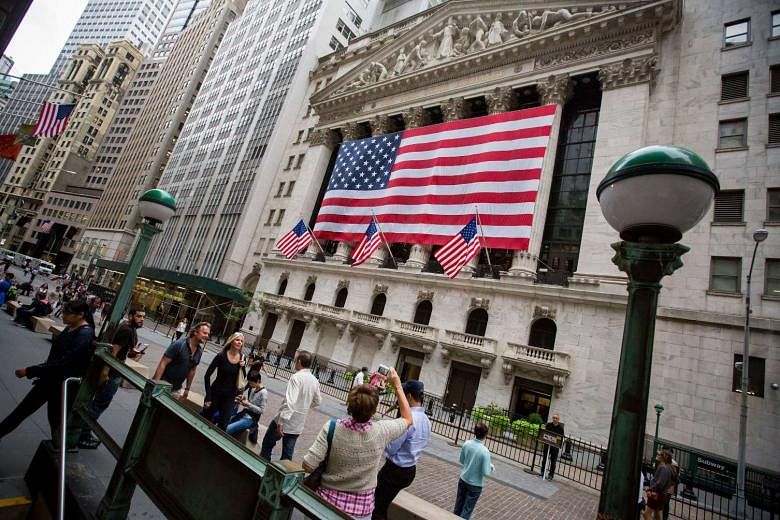LONDON (BLOOMBERG) - Investors scooping up the riskiest emerging-nation corporate bonds in an indiscriminate rush for yield are facing a growing clamour of warnings.
While a 12.4 per cent return this quarter on company debt rated eight levels below investment grade rewarded those who pushed into the fringes of the debt market, sub-investment grade defaults have reached a six-year high. Societe Generale and Bank of America are predicting a correction and on Thursday (Sept 8) Hermes Investment Management said it's time to "increase vigilance and move up in quality", echoing BlackRock's earlier call to be more selective.
"There's a danger that people get complacent after a rally like this," said Mr Siddharth Dahiya, who helps oversee about US$11 billion (S$14.9 billion) at Aberdeen Asset Management in London as head of emerging-market corporate debt. "You have to be more careful when yields are low. You have less room when things go wrong."
Emerging-market companies will be put to the test over the next three years as they come up against a 40 per cent increase in maturing debt to US$340 billion that will need to be refinanced.
S&P Global Ratings had about 33 per cent of issuers in developing countries on negative outlook at the end of the second quarter compared with a historical average of 19 per cent.
The market value of the Bloomberg High-Yield Emerging-Market Corporate Bond Index has swelled 30 per cent to US$260 billion in the past two years as investment-grade companies from Brazil to Russia joined its ranks amid a plunge in oil prices.
Junk-bond yields have fallen to a two-year low of 7.3 per cent as a delay in the Federal Reserve's cycle of interest-rate hikes boosted demand for riskier assets. That compares to 1.6 per cent on 10-Year US Treasuries.
The surge in appetite has pulled about 30-dollar bonds that were trading below 60 cents on the dollar at the beginning of the year out of distressed territory, according to a Bloomberg corporate bond index.
The rally has also swept up many of the corporate issuers S&P holds on negative watch. Yields on debt maturing in 2041 of Brazilian chemicals company Braskem SA have dropped 3.4 percentage points this year to 6.56 per cent, despite a warning from S&P that the company has "significant" financial risks.
Beijing Capital Group Co's 2018 bond yield dropped to a 15-month low of 2.72 per cent in August, two months after the ratings company said the Chinese real-estate firm's debt levels had deteriorated beyond expectations.
Bond-market momentum is supported by emerging-country currencies which have rebounded 9.7 per cent from a seven-year low reached in January, reducing the burden of servicing dollar debt and making it easier to refinance. Economic fundamentals are also improving, with countries like Brazil and Russia poised to emerge from recession.
"In the current low-yield, low-interest rate environment the asset class offers significant potential for returns, especially when compared to debt in more developed markets," said Mr Colm McDonagh, head of emerging-market debt at Insight Investment Management in London.
Analysts at Societe Generale and Bank of America are less optimistic, with both predicting a correction as investors get more discerning ahead of US presidential elections in November.
Economic surprises including renewed signs of a slowdown in China's economy or a downturn in commodities threaten a "sharp pullback" in emerging corporate bonds, Bank of America analysts including Anne Milne said in an e-mailed note earlier this month.
Elevated corporate debt levels, especially in China, Brazil and Turkey, have left companies vulnerable to investors pulling money out of emerging markets, the Bank for International Settlements said in an August report.
Bonds sold by non-financial companies in developing nations increased to 110 per cent of their gross domestic product by 2015, up from less than 60 per cent in 2006, the report said.
The default rate for high-yield emerging-market corporate bonds climbed above 4 per cent in June for the first time since 2010, according to Bank of America Merrill Lynch Global Data.
"Should the asset class be getting so much money going into it given that valuations are stretched and the fundamentals are somewhat worrying? I don't think so," said Mr Guy Stear, head of emerging-market credit research at Societe Generale. "People are willing to overlook a lot of issues in the hunt for yield."

